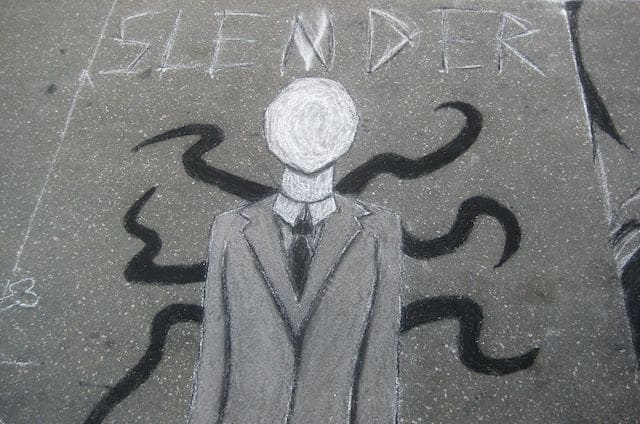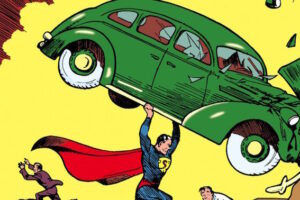10 Eerie Urban Legends That Started on the Internet
The internet is a strange and wonderful place, filled with everything from quirky homemade websites to stunning original art and writing. It’s a vast, ever-changing landscape where creativity knows no bounds. But sometimes, a writer or creator hits a little too close to the mark, crafting something so convincing that it blurs the line between reality and fiction. Whether it’s a chilling horror story, a cleverly edited image, or a bizarre rumor, all it takes is a few people believing it’s real for it to spread like wildfire.
These stories, often born from the depths of online forums or social media, can take on a life of their own. Some fade away quickly, while others linger for years, becoming modern-day urban legends. From eerie tales that send shivers down your spine to hoaxes that fooled millions, the internet has given rise to countless myths that continue to captivate and confuse. Here are ten of the most fascinating urban legends that started online—stories so strange, you’ll wonder how anyone believed them… and yet, somehow, they did.
10.The Slender Man

When it comes to internet-born urban legends, Slender Man is the ultimate starting point. He’s the perfect example of how a simple idea can snowball into a global phenomenon—and sometimes, take a dark turn along the way.
The character was dreamed up in 2009 by Eric Knudsen, a user on the Something Awful forum. Knudsen posted a series of doctored photos featuring a tall, faceless figure lurking in the background, stalking children. The eerie images quickly captured the internet’s imagination. Slender Man’s popularity skyrocketed thanks to two key projects: Marble Hornets, a YouTube horror series with Blair Witch Project-style found footage, and Slender: The Eight Pages, an indie horror game where players had to collect pages while evading the creature. These projects helped define Slender Man’s look and abilities, cementing his place in online folklore.
But not all the attention was positive. In 2014, the character became linked to a real-life tragedy when two 12-year-old girls, Anissa Weier and Morgan Geyser, stabbed a friend in an attempt to “appease” Slender Man. Thankfully, the victim survived, but the incident made headlines worldwide, casting a shadow over the character’s legacy.
Despite the controversy, Slender Man remains a beloved figure in the horror community, inspiring countless creators to craft their own terrifying tales. Without him, modern internet horror icons like Siren Head or The Rake might never have existed. Love him or fear him, Slender Man is a testament to the power of storytelling—and how the internet can turn a simple idea into something unforgettable.
9.The Russian Sleep Experiment

If you’re not familiar with Creepypasta, now’s the perfect time to dive into this unique corner of internet storytelling. Simply put, Creepypasta stories are original horror tales written by internet users of all ages, designed to be shared and spread across platforms like Reddit. These stories can range from chilling encounters with supernatural creatures to spine-tingling tales of stalkers or eerie late-night experiences. They’re the digital age’s campfire stories, meant to unsettle and entertain.
One of the most famous Creepypasta stories is The Russian Sleep Experiment, which emerged in the early 2010s. Its disturbing premise and realistic format have made it a standout in the genre. The story is presented as a recount of a Soviet-era experiment from the 1940s, where five test subjects were kept awake for 15 days using an experimental gas. While the tale is entirely fictional, it’s grounded in real sleep deprivation studies from the late 1800s, which adds to its unsettling credibility.
As the experiment progresses, the subjects descend into madness, screaming uncontrollably and eventually transforming into zombie-like monsters. The story takes a dark turn as these creatures turn on their overseers, resulting in a gruesome and horrifying conclusion. A quick Google search will often bring up chilling artistic depictions of the subjects in their final, monstrous forms, adding another layer of terror to the tale.
The Russian Sleep Experiment is a masterclass in Creepypasta storytelling—short, sharp, and deeply unsettling. It’s a prime example of how these internet-born stories can captivate and horrify, proving that sometimes, the scariest tales are the ones that feel just real enough to be true.
8.Jeff the Killer
It’s not uncommon for Creepypasta characters to break out of the confines of their own story and attain widespread notoriety online. We saw this already with Slender Man, but Jeff the Killer serves as another example of this trend and it’s not hard to see why. If you were the type to seek out strange or twisted online content in the early 2010s, there’s a good chance you’ve bumped into Jeff and his darling face at some point.
The story itself, as well as its various retoolings, tells the story of Jeffrey Woods, a thirteen-year-old boy who is disfigured during a scuffle with a local bully. This outward transformation severely affects Jeff’s mental state, causing him to snap and become, as we soon learn, homicidal. Left with pale skin following the incident, Jeff completes his hideous metamorphosis by cutting his lips into a permanent smile and burning off his eyelids. He then follows this up by brutally murdering his entire family before going on a subsequent killing spree, ending the story. Jeff’s unsettling appearance is a major aspect of why he’s attained such a well-known status, it’s an effectively disturbing design that’ll trigger a couple of nightmares.
While many were, and still are, highly critical of the story’s amateur nature, there’s no denying Jeff’s staying power as a Creepypasta mascot. Kids who grew up surfing the web during Jeff’s rise to online prominence were fully convinced they’d wake up with him standing over their bed!
7.Ben Drowned
Within the venue of Creepypastas, disturbing narratives and retro video games go together like peanut butter and chocolate. From corrupted cartridges to disturbing narratives set within typical family-friendly games like Super Mario or Pokémon, the subgenre is loaded with possibilities.
However, often regarded as a top contender for the best video game Creepypasta is Ben Drowned, a story about a haunted Legend of Zelda: Majora’s Mask cartridge. Written by Alex Hall, also known as “Jadusable,” the story introduces us to a college-age retro game enthusiast who acquires a Majora’s Mask cartridge at a garage sale from a strange old man. He pops it in, begins playing, and soon becomes aware of the reality of what he’s bought, a game cartridge with a ghost inhabiting it. This manifests as glitches within the game, including recurring and disturbing appearances from Link’s empty shell created by the Elegy of Emptiness.
From there, the story grows from a simple narrative about a haunted game to a bigger story about a sinister cult. Ben Drowned has become a mainstay of the Creepypasta community, with many creating analytical video essays and even live-action adaptations of the story as well. While undoubtedly fictional, the story’s effective nature did get people to look at their dusty old game cartridges a little bit differently and that’s impressive.
6.Polybius
The legend of Polybius is arguably the most iconic video game urban legend of all time, sparking endless debates, analyses, and creative tributes. In the early 2000s, whispers began circulating online about a mysterious arcade game that was as fascinating as it was terrifying. Polybius was said to feature cutting-edge vector graphics and a mix of puzzle and shooter gameplay, making it a surprisingly advanced game for its time. Adding to its mystique was the claim that it was published by a shadowy company called Sinneslöschen—a name that only deepened the enigma.
But Polybius wasn’t just a game; it was allegedly a danger to anyone who played it. Stories claimed it caused bizarre side effects, including memory loss, nightmares, insomnia, and even suicidal thoughts. Stranger still, men in black suits were said to visit arcades where the game was located, collecting data from the machines before Polybius vanished without a trace. Poof—gone, as if it never existed.
Despite the lack of any concrete evidence that Polybius was real, the legend has taken on a life of its own. Fans have created playable versions of the game, built fake arcade cabinets, and even produced horror shorts and documentaries exploring its mythos. While Polybius never actually graced any real arcades, its story has captivated an entire generation of gamers, proving that sometimes, the most compelling tales are the ones that live in the shadowy space between fact and fiction.
5.Ted the Caver
Many internet horror stories, if presented properly, have a very good chance of fooling readers into thinking they are true, even if for a little while. In the case of Ted the Caver, its format goes a long way in helping sell the narrative’s authenticity, especially because of the website it resides on. In the late 1990s and early 2000s, Angelfire was an internet service that allowed online users to build professional-looking webpages, like an early version of Squarespace.
One such homebrewed website was Ted the Caver, a “blog” that told the story of the eponymous Ted and his friends – Brad and Joe. Through Ted’s entries, we learn about the group’s adventure through a cave they discovered and the consequences of their explorations. As the story progresses, it slowly transforms from a page-by-page caving recap to something more sinister and unsettling. The trio encounters such chilling oddities as ghastly screaming, strange hieroglyphs, and is later plagued by hallucinations and nightmares after their departure. Brad layered posted his intentions to reenter the cave with his friends, armed with a gun and knife, to achieve some closure.
That was Ted’s final post, leaving his ultimate fate shrouded in mystery, much like the cave he was exploring. If you’re a big fan of films like The Descent or As Above, So Below, then this story will provide ample entertainment and intrigue. Many believed Ted the Caver wholeheartedly, with its fictional nature being discovered much later, making it a prime example of an internet urban legend.
4.The Red Room Curse
For our next entry into internet urban legends, we turn our gaze to Japan, a country with no shortage of disturbing urban legends and folklore. There are plenty of terrifying internet-based tales from the land of the rising sun that we could cover, but this one is a particularly unnerving example.
The Red Room Curse is an urban legend that plays into the dark side of the internet we all know too well. Those dark pockets of the world wide web where people’s deepest darkest proclivities come out to play, as well as to conduct shady business. The legend kicked off in the late 1990s when an interactive Flash animation popped up on GeoCities, a web hosting service for custom websites. The interactive animation tells the story of a young boy who, while perusing the internet, encounters the Red Room pop-up and dies after seeing it.
So the legend grew, the terrifying tale of a mysterious pop-up that would result in an immediate gruesome death in your own home. While a definite piece of horror fiction, early internet users hadn’t yet developed the knowledge to discern trickery from legitimate fact. It still stands as a tremendous early example of viral horror content, sending a shiver down the spine of many modern internet users.
3.The Hat Man
Some internet urban legends gain traction simply because so many people share and spread them, especially when they’re tied to a common experience. Enter the Hat Man, a shadowy figure wearing a top hat who has become a staple of online folklore. This eerie character is often linked to sleep paralysis, a phenomenon where your body is asleep but your mind is awake, leaving you unable to move or speak. During these episodes, the line between dreams and reality blurs, and many people report seeing terrifying visions—like the Hat Man.
A quick visit to r/HatMan reveals just how widespread these encounters are. Stories range from childhood memories to recent sightings in bedrooms, hotel rooms, and beyond. While the Hat Man is likely just a shared hallucination born from the strange state of sleep paralysis, the consistency of these accounts is striking. People describe him as a tall, shadowy figure with a distinctive hat, often looming silently at the edge of their vision.
Despite the lack of evidence that the Hat Man is anything more than a trick of the mind, his legend has taken on a life of its own. He’s become a fascinating addition to the world of internet urban legends, a figure who feels both deeply personal and universally unsettling. Whether he’s a product of sleep paralysis or something more mysterious, the Hat Man continues to haunt the imaginations of countless people online.
2.Smile Dog
We now return to the world of Creepypastas to take a look at another story that escaped the forums and took on a life of its own. The story of Smile Dog, also known as smile.jpg, concerns an allegedly cursed photo that has been spread around online.
The story is almost a spin on the cursed VHS tape from The Ring, only this time it’s a cursed photograph of a sinister-looking dog. The story’s narrator recounts his experience with a woman named Mary and her dealings with the Smile Dog photo. As the story progresses, the narrator questions the validity of Mary’s bizarre claims up until the day of her tragic suicide. The story then concludes with the reveal of the actual image, a bloodstained polaroid of the titular Dog having just claimed another life. The implication is that still will spread the curse further and further, ending the story on a truly haunting note.
The whole thing feels very much in line with the trend of haunted chain emails that would circulate in the late 1990s and early 2000s. While more than a little cheesy upon a more modern examination, much like Jeff the Killer, the Smile Dog story still stands as a charming oddity of the late 2000s internet.
1.Squidward’s Suicide
If you’ve ever dived into the world of Creepypastas and internet horror, chances are you’ve come across Squidward’s Suicide. Whether you stumbled upon it yourself or heard about it from a friend, this eerie tale has left a mark on just about everyone who’s encountered it. It’s one of those stories that sticks with you, no matter how much you might want to forget it.
The story is presented as a firsthand account from a former Nickelodeon intern who worked at the studio in the mid-2000s. According to the tale, animators would often insert mock title cards with raunchy jokes into unfinished episodes for a quick laugh. But one day, during a screening of an episode titled Squidward’s Suicide, things took a dark turn. What started as a typical SpongeBob adventure quickly morphed into a surreal, disturbing exploration of Squidward’s mental breakdown. The episode allegedly featured hyper-realistic, bloodshot eyes and even images of real corpses, leaving everyone in the room horrified.
While the story is undeniably edgy and over-the-top, it struck a chord with Creepypasta fans and sparked a wave of similar tales. Suddenly, every piece of childhood media—from Sonic the Hedgehog to Disney movies to Pokémon—was getting the Squidward’s Suicide treatment. These twisted reimaginings of beloved shows became a staple of internet horror, and it’s all thanks to this one infamous story. So, if you’ve ever stumbled across a creepy retelling of your favorite childhood cartoon, now you know where it all began.
























